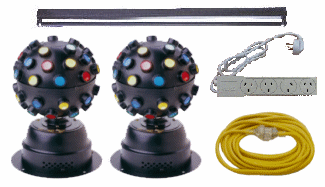lightingguy1
Active Member
Hi Everyone!
Long time, no controlbooth!
I'm looking for an instrument(or two) that can light up a mirror ball for an upcoming show. Now, before the flood of suggestions for movers overwhelms this thread, we don't a budget that allows for renting multiple fancy Clay Paky beam fixtures. We've tried using conventionals, but it's just not a bright enough effect for our liking.
I guess what we're looking for is a fixture that uses a discharge lamp instead of tungsten(maybe even LED..)
We're a community theater and don't even think about recommending a couple of S4 LEDs. We need a practical solution.
Thanks!!
Long time, no controlbooth!
I'm looking for an instrument(or two) that can light up a mirror ball for an upcoming show. Now, before the flood of suggestions for movers overwhelms this thread, we don't a budget that allows for renting multiple fancy Clay Paky beam fixtures. We've tried using conventionals, but it's just not a bright enough effect for our liking.
I guess what we're looking for is a fixture that uses a discharge lamp instead of tungsten(maybe even LED..)
We're a community theater and don't even think about recommending a couple of S4 LEDs. We need a practical solution.
Thanks!!



